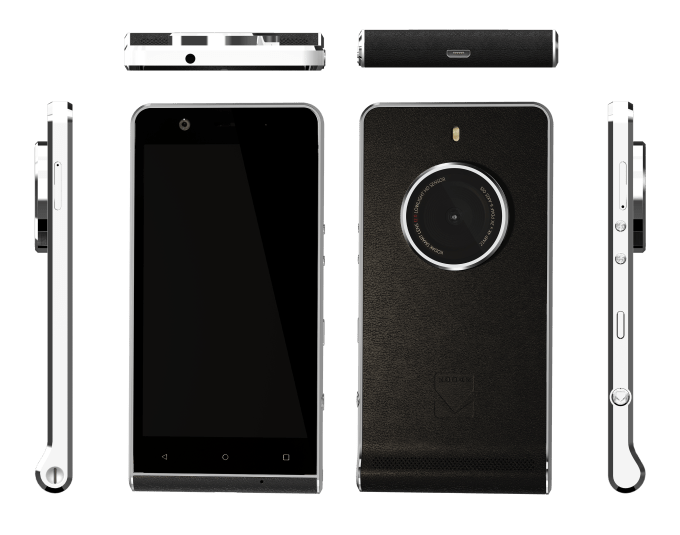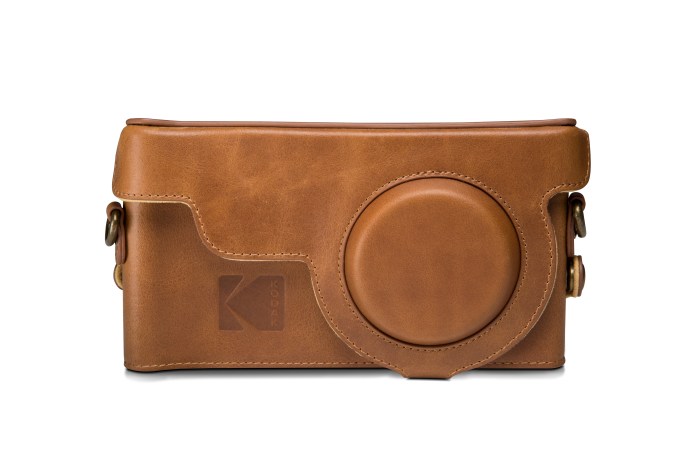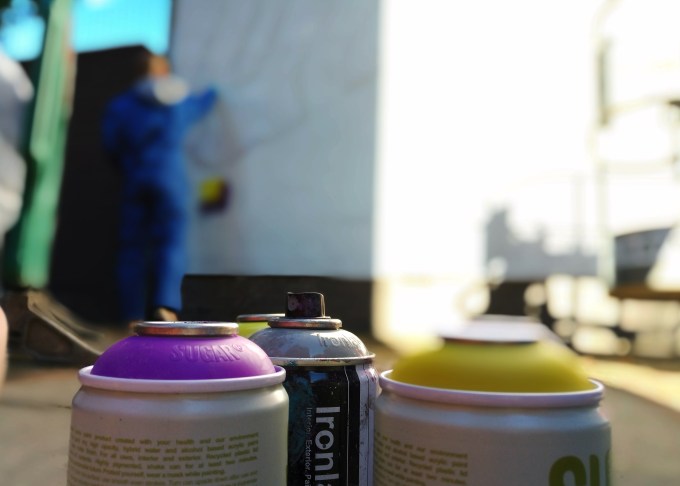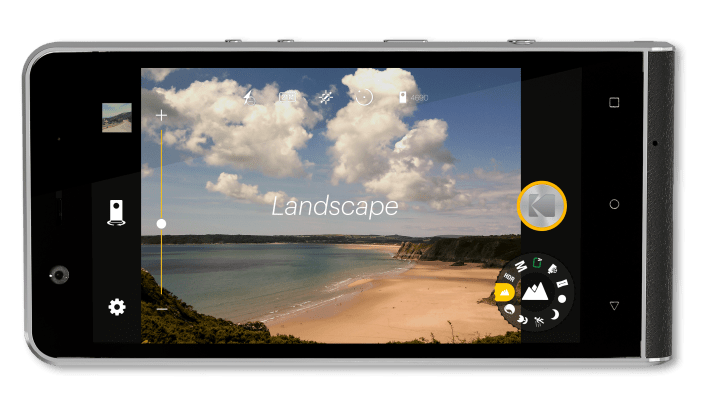In a week where there has been much talk about a new phone vying to have world’s best smartphone camera, another device focused on photos called the Kodak Ektra is also making its public debut (after being teased earlier this month). Launching today in the UK and initially available only in Europe for £449 ($550), the Ektra is hoping to attract photo enthusiasts — in its case by tapping into one of the more iconic brands of the medium, Kodak’s 1940s Ektra camera, alongside some more modern bells and whistles.
“Kodak has a rich history in imaging technology and the launch of the KODAK Smartphone today demonstrates our ongoing commitment to bringing the latest advances in photography to consumers,”Jeff Clarke, Kodak Chief Executive, said in a statement. “The original KODAK EKTRA Camera was launched in 1941 and in its latest reincarnation, opens up a world of creative opportunities to all who care about photography.”
Notably, like the previous Kodak smartphone that debuted in 2015, the Kodak Ektra is not made by Kodak itself: it’s made by a UK-based company called the Bullitt Group, which has licensed the brand and some other IP from Kodak (Kodak itself focuses only on IP post its 2012 bankruptcy).
Bullitt — co-founded by ex-Motorola execs and staffed with many alums from once-huge, now disappeared European handset makers — is very much a product of the modern, modular phone industry (the one that sits at the other end of vertically integrated devices from the likes of Apple and, now, Google). It makes phones for a number of brands, bringing together components and manufacturing from a variety of sources to build each one. In the case of the Ektra they include a 21 megapixel Sony sensor in the camera and a MediaTk MT6797 Helio X20 Deca-core, and ARCSOFT night shot technology.
Unlike the previous Kodak smartphone — the IM5, which intentionally positioned itself as an entry level device — the Ektra is focusing on (and pricing itself with) higher aspirations: it describes itself as “a smartphone designed for photographers” and is taking that promise both to its hardware and software ends.

Outside, the phone has made some design choices that borrow a little kitsch from old cameras: the lens is large, positioned to the side and intentionally sticks out. When you hold the phone horizontally, there is a physical “shutter” button with the Kodak “K” that you press to take pictures.
The casing itself has a curved edge, similar to what a film-based camera might have had to hold its film roll. The whole device is also encased in a leatherette covering, reminiscent of the outside of old, classic 35mm cameras. It’s also quite big and chunky: 147.8mm x 73.35mm x nearly 10mm (9.69mm), with that width expanding to 14.02mm in the section where the lens protrudes.
The covers that the company is also making to fit with this phone come in a basic sleeve that I found a little stiff, and a clip-on cover that goes around your neck, borrowing again from classic camera design. Both are made in leather.

Inside, the phone is putting its camera features into the foreground. The phone runs on a straight (unforked) version of Android 6.0 and Bullitt is “considering” how it will upgrade to future versions (handy since Android 7.1 got released yesterday as a developer preview). Google’s camera app has been swapped out and in its place there is a Kodak camera app.
The core of this experience is focused around a “carousel” on the screen, which enlarges when you press it and uses haptic feedback to give you the sensation of turning a wheel to select pre-made settings like portrait, manual, sports, Bokeh (for the blurred background and sharp image in the foreground), night, HDR, panorama, Macro, landscape and film/video. The manual model features a fuller range of settings to modify how your picture is taken, akin to DSLRs and older style cameras. Modifications can be previewed in real time.
One nice aspect of the camera app is now it integrates with further camera editing apps. For example, once you take a picture you can instantly start to edit it in Snapseed with the touch of a small button in the preview pane.

There is also a “Super 8” video app that adds filters to your videos to give them a vintage feel, and the phone comes preloaded with a special set of “editor’s selection” of photo apps that it thinks represent the cream of the crop of the thousands of photo apps that are on the market today. (Instagram is not among these; it comes as part of Google’s own prompt to download a core group of social apps when you first turn on and activate the phone.)
There are also several features in the smartphone interior that cater to the photo experience. The 21-megapixel fast focus camera sensor has a f2.0 aperture, and a 13-megapixel front-facing camera with Phase Detection Auto Focus PDAF and f2.2 aperture, Bullitt says.
All of this is well and good but you have to wonder just who would buy this device rather than an actual high-end camera plus a really good quality smartphone with a high quality camera attached to it.
In that vein, something strikes me as a little ironic about choosing the Ektra branding for this effort: when the original Ektra was launched in 1941, “it was amazingly innovative and feature laden, actually outshining the contemporary Leica and Contax in terms of features,” according to one historic account. But it may have been too clever by half and failed to find the market that it was trying to reach.
Fast forward about 30 years, and Kodak was using Ektra for a lot more than just its high-end devices. It will be interesting to see which route this latest generation of the brand follows, or if indeed the Kodak brand still holds enough sway to bring in the snappers.
The phone, Bullitt tells me, is going on sale “later this year,” which they said would definitely be before the holiday shopping season but declined to give a specific date. The company is currently also negotiating with a range of retailers and a couple of carriers about selling the device. The latter could also mean it will be sold at a subsidized price.
Full features:
— ANDROID 6.0 (Marshmallow)
— Professional results from a 21MP fast focus camera sensor with F2.0, PDAF, OIS, Dual LED Flash
— 13MP phase detection auto focus front-facing camera with F2.2 PDAF
— Helio X20 2.3GHz Decacore processor with 3GB RAM
— 32GB memory, expandable with MicroSD cards
— Advanced Manual Mode – adjustable on Exposure, ISO, Focal Length (Manual/Auto), White Balance, Shutter Speed, Aperture (fixed f2.0 main camera)
— Familiar scene selection dial experience – includes scene modes Smart Auto, Portrait, Manual, Sports, Bokeh, Night-time, HDR, Panorama, Macro, Landscape, Film / Video
— Integrated high quality printing app
— Super 8 Video Recorder
— Integrated social media sharing
— 3000mAh, with USB 3.0 Type C fast charger
